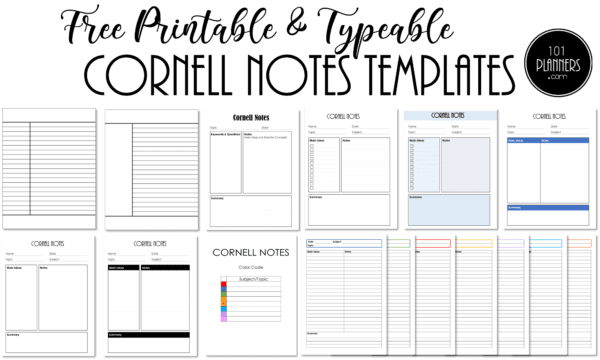

Taking notes is inevitable for university students, but not all notes are created equally. A messy page of scrawled impressions isn’t going to help you as much as a well-thought-out and carefully organized sheet detailing what you learned and what you still need to know. Cornell Notes are great for improving your critical thinking skills and learning to manage your notes visually, making them easier to understand and review. By highlighting the most important information and keywords, you are more likely to remember the lesson.
Use any of these free printables for the Cornel method of note-taking.
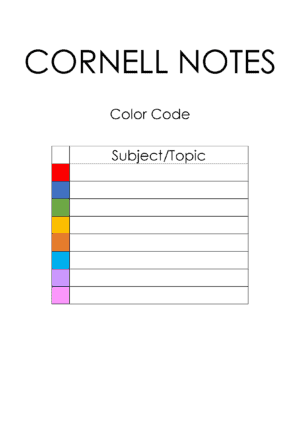
(See the 9-page notebook below)
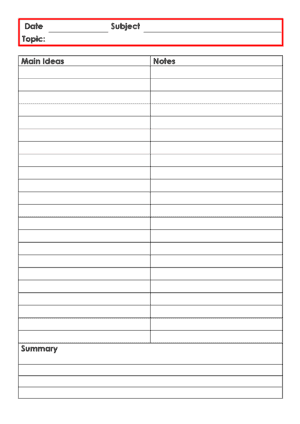
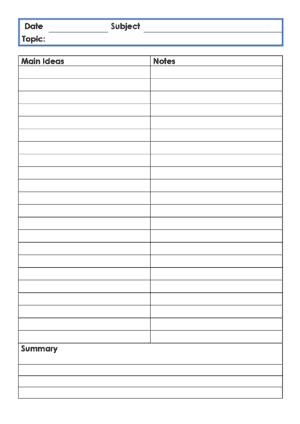
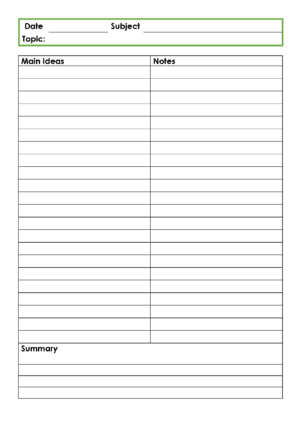
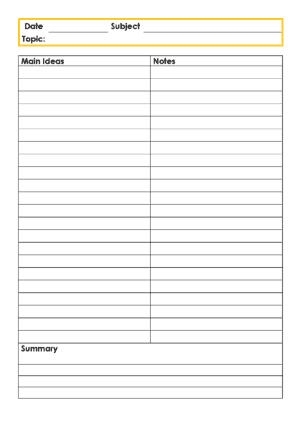
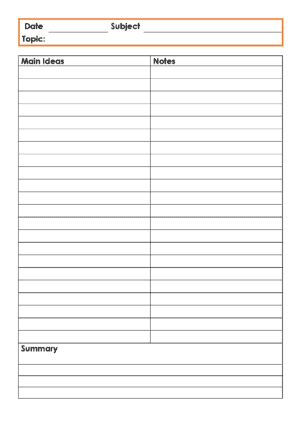
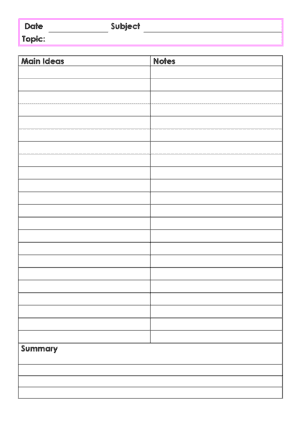
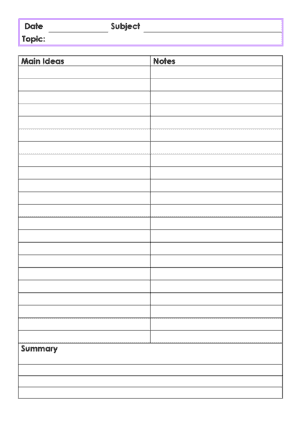
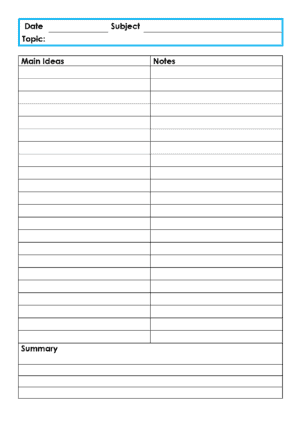
9 Pages: Color Code and 8 Templates with 8 Colors: Word | PDF | Google Docs
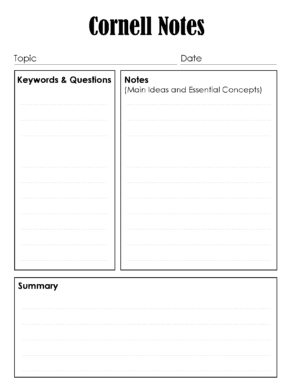
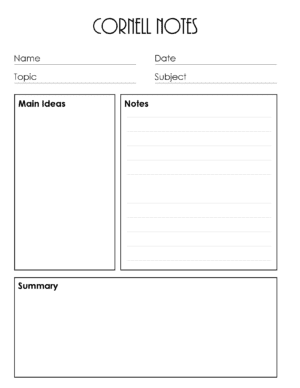
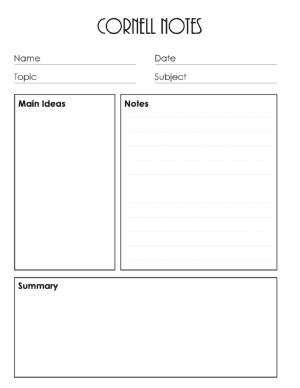
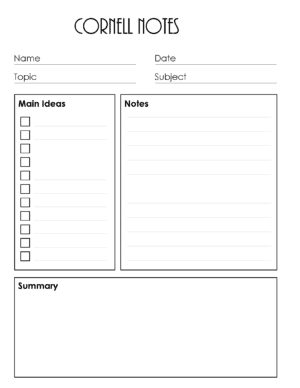
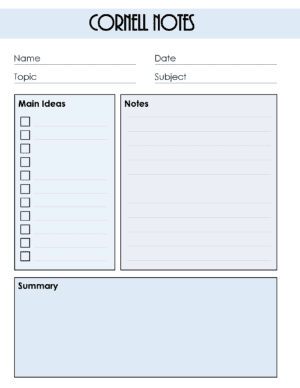
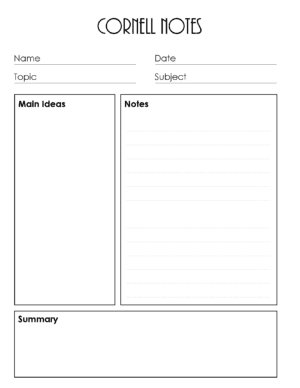

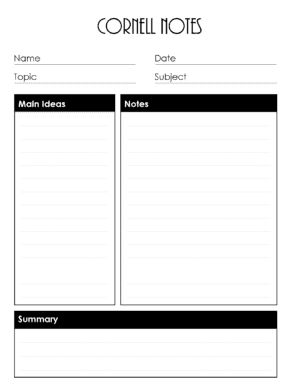
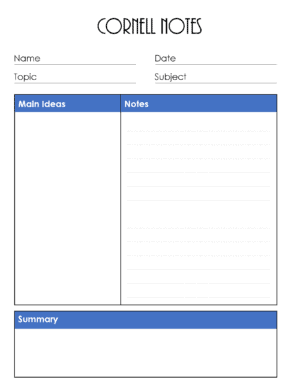
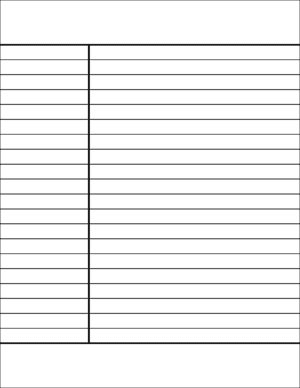
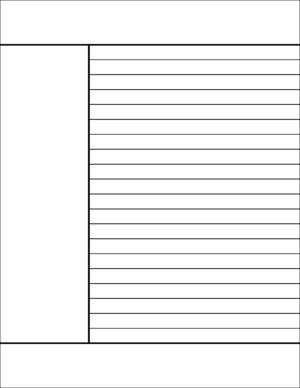
This is a 9 Page Cornell Notes notebook. Make additional copies of each page according to the number of copies you need.
9 Pages: Color Code and 8 Templates with 8 Colors: Word | PDF | Google Docs
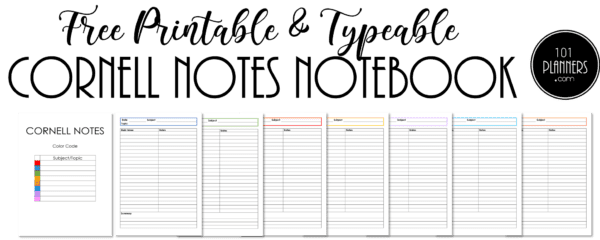
You can either print the Cornell notebook and write your notes or type on it before you print it.
Using your Cornell notes template should be relatively simple. Once you have downloaded a template, save one blank copy to a file or folder where you’ll have no trouble accessing it. When you need to take notes, print a copy and write your notes in your own handwriting. It is much more effective to write your summary than to type it. When you type you don’t always process the information. It is passive listening and you often just type what you hear. On the other hand, when you write your summary you need to think about what to write and therefore it is a form of active listening. You process the information and summarize it instead of just repeating it as you often do when you type.
If you prefer to type your notes then open your blank template and fill in the sections using Microsoft Word, Google Docs, or a similar program. You can also just open the typeable PDF and fill in the details. You can save each page under a unique name while maintaining the original template frequently.
Here are a few tips and tricks to help you take better Cornell Notes.
What are Cornell Notes?
Cornell University Education Professor Walter Pauk created the Cornell Notes system in the 1950s to help students organize and summarize the notes they take in classes. This well-respected system is easy to learn. By breaking the page into four primary sections, not only is the information neatly organized, but it is also easy to review. The keywords and questions area lets you expand upon anything you need to delve into more deeply. However, most of the page is dedicated to the information collected during the class.
Cornell Note-Taking Method
In addition to the handy format, Cornell Notes uses a process for note-taking that helps you remember the information better. Not only will you write down what you are learning, but you’ll have to use the data later as you review, so critical thinking is essential. You must listen for the main ideas and ensure you get all the main concepts and keywords and any questions you may need to answer as you study and find a way to boil that information down to just a few sentences for your summary.
How to Take Cornell Notes
Taking Cornell Notes boils down to five basic concepts: Record, reduce, recite, reflect, and review. These basic concepts are all you need to take better, easier-to-review, and more organized notes. Below we’ll explain each concept and show you how it impacts and improves your note-taking.
Record – The record part of note-taking is universal. In this case, you’ll have two columns instead of a big blank sheet, but either way, you need to write or type what you learn. Keywords and questions go on the left, and expanded notes with essential information are on the right.
Reduce – Reducing your notes involves minimizing and compiling your information into a more condensed format. Add questions and thoughts to direct your studies as you expand your understanding later.
Recite – Cover the right column with your keywords and concepts and attempt to repeat the information. What was the most vital point you wrote down? Say it out loud so you can hear the facts repeated.
Reflect – Reflection is about contemplating the information you gathered and expanding on it through study. Seek out new information and clarify anything that you weren’t sure about.
Review – Go over your notes periodically to help retain the information. Research any new questions you may have due to these review sessions.
Below is an example of what a Cornell Notes Template looks like and what to place in each section. Some areas are apparent and easy to fill in, while others are more abstract and require you to pare down the information you’ll receive into a more palatable set of simplified notes. You can change the Topic section to read Class or Professor if it is easier to understand at a glance. We also offer color-coded templates so that you can color-code each subject or topic. There are 12 different layouts available below.
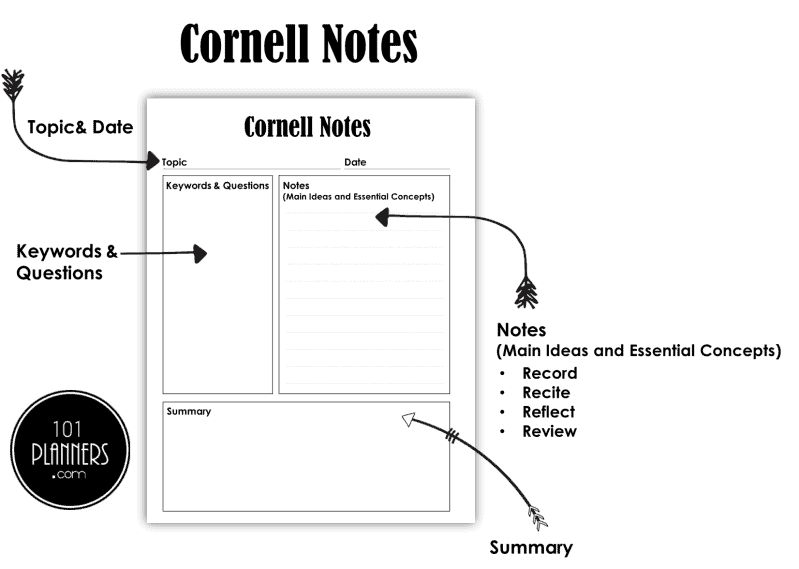
The Cornell Notes format is simple to create because it has only four sections. You will have a header section at the top and a few lines at the bottom of the page to make your summary. Most of the page is split 30/70 between your keywords and questions column and the body of your notes. Here are more details about each section.
1. Heading- The heading should tell you precisely what you are looking at. Your name, the subject, the date, and the note page number belong at the top of the page in large print.
2. Keywords and Questions- On the left side of the page, you will have space to keep track of the most important words. Add questions to quiz yourself and further expand your comprehension of the subject through research.
3. Notes and Important Concepts- The right vertical column or main section is the largest because this is where you’ll add the main body of your notes. This is where you must include all the main points and important concepts. Abbreviations are recommended to help save space.
4. Summary- Even if you need additional pages to finish taking all your notes for a single lecture or class, you should still summarize your notes for each page. This helps you to think critically about what matters the most and how to express it concisely. Moreover, you can avoid repeating information you already recorded because checking to see what you wrote only takes a brief moment as you read the summary.
See Cornell notes example above.
The Word version is perfect if you want to edit the template, change the titles or make other changes and you use Microsoft Word.
The Google Docs template is perfect for those who want to edit templates and use Google Docs. It is also handy when you want to share your Cornell notes with others.
The Cornell Notes PDF version is fillable or typeable. You don’t need special software to type on it (it will work on any PDF reader which is already installed on most computers). You can also use the PDF version to create digital Cornell Notes.
The image versions are perfect if you don’t want to make any changes and you want to use the templates as-is.
Some students prefer to label these 2 columns differently. You may see them listed as the Recall or Review Column and the Main Thoughts Column or a similar variation. The format is more important than the labels you place on it. If you do want to change the titles then edit them with MS Word or Google Docs.
The Cornell method is superb for helping you memorize and learn essential information from your classes and lectures. The simple, organized pages ensure that you cover all the core concepts, keywords, and questions, so you can review in moments and follow up on everything you need to learn more about. The ability to focus and summarize your studies, easily see the information you have already gathered and quickly find any page of your notes will reduce wasted time and help you memorize better. Since there is an integrated system for self-reviewing your notes, it’s easy to determine which concepts you understand and what areas need more focus and research. Using this simple, four-section format for your note pages will keep your studies on track, and choosing a pre-formatted template will keep those notes consistent, organized, and easy to locate.